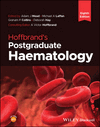Hodgkin lymphoma
Beth Phillips
Division of Cancer Sciences, University of Manchester, and The Christie Hospital, Manchester, UK
Department of Haematology, Oxford Cancer and Haematology Centre, Oxford, UK
Search for more papers by this authorGraham P Collins
Department of Haematology, Oxford Cancer and Haematology Centre, Oxford, UK
Search for more papers by this authorBeth Phillips
Division of Cancer Sciences, University of Manchester, and The Christie Hospital, Manchester, UK
Department of Haematology, Oxford Cancer and Haematology Centre, Oxford, UK
Search for more papers by this authorGraham P Collins
Department of Haematology, Oxford Cancer and Haematology Centre, Oxford, UK
Search for more papers by this authorAdam J Mead PhD, FRCP, FRCPath, FMedSci
Haematopoietic Stem Cell Biology Laboratory, Medical Research Council Molecular Haematology Unit, Medical Research Council Weatherall Institute of Molecular Medicine, University of Oxford, Oxford, UK
Search for more papers by this authorMichael A Laffan DM, MRCP, FRCPath
Department of Immunology and Inflammation, Faculty of Medicine, Imperial College London, London, UK
Search for more papers by this authorGraham P Collins DPhil, FRCP, FRCPath
Department of Haematology, Oxford Cancer and Haematology Centre, Oxford, UK
Search for more papers by this authorDeborah Hay DPhil, MRCP, FRCPath
Nuffield Division of Clinical Laboratory Sciences, Radcliffe Department of Medicine, University of Oxford, Oxford, UK
Search for more papers by this authorA Victor Hoffbrand MA, DM, FRCP, FRCPath, FRCP (Edin), DSc, FMedSci
Emeritus Professor of Haematology Honorary Consultant Haematologist
University College London, London, UK
Royal Free Hospital, London, UK
Search for more papers by this authorSummary
Hodgkin lymphoma (HL) is an aggressive B-cell malignancy that affects all ages from late childhood through to the elderly. Pathognomonic features include malignant Reed–Sternberg cells surrounded by a rich inflammatory immune microenvironment that supports tumour growth. Cure rates with frontline chemotherapy +/− radiotherapy are high, therefore minimising late treatment-related effects is a key factor in treatment selection. Treatment of relapsed and refractory HL remains challenging but is aided by a growing arsenal of targeted immunotherapies. Challenges for the future include refining risk stratification to provide personalised treatment, and translating advances in our knowledge of HL immune biology into targeted frontline treatment. This chapter summarises the pathobiology, clinical features and modern management of both classical HL and nodular lymphocyte predominant HL.
Selected bibliography
- André MPE , Girinsky T , Federico M et al . ( 2017 ) Early positron emission tomography response-adapted treatment in stage I and II Hodgkin lymphoma: final results of the randomized EORTC/LYSA/FIL H10 trial . Journal of Clinical Oncology 35 : 1786 – 94 .
- Borchmann P , Goergen H , Kobe C et al . ( 2017 ) PET-guided treatment in patients with advanced-stage Hodgkin's lymphoma (HD18): final results of an open-label, international, randomised phase 3 trial by the German Hodgkin Study Group . The Lancet 390 : 2790 – 802 .
- Borchmann P , Plütschow A , Kobe C et al . ( 2021 ) PET-guided omission of radiotherapy in early-stage unfavourable Hodgkin lymphoma (GHSG HD17): a multicentre, open-label, randomised, phase 3 trial . The Lancet Oncology 22 : 223 – 34 .
- Johnson P , Federico M , Kirkwood A et al . ( 2016 ) Adapted treatment guided by interim PET-CT scan in advanced Hodgkin's lymphoma . The New England Journal of Medicine 374 : 2419 – 29 .
- Kuruvilla J , Ramchandren R , Santoro A et al . ( 2021 ) Pembrolizumab versus brentuximab vedotin in relapsed or refractory classical Hodgkin lymphoma (KEYNOTE-204): an interim analysis of a multicentre, randomised, open-label, phase 3 study . The Lancet Oncology 22 : 512 – 24 .
- Radford J , Illidge T , Counsell N et al . ( 2015 ) Results of a trial of PET-directed therapy for early-stage Hodgkin's lymphoma . New England Journal of Medicine 372 : 1598 – 607 .
- Roemer MG , Advani RH , Ligon AH et al . ( 2016 ) PD-L1 and PD-L2 genetic alterations define classical Hodgkin lymphoma and predict outcome . Journal of Clinical Oncology 34 : 2690 – 7 .
- Schaapveld M , Aleman BMP , van Eggermond AM et al . ( 2015 ) Second cancer risk up to 40 years after treatment for Hodgkin's lymphoma . New England Journal of Medicine 373 : 2499 – 511 .
- Spinner MA , Varma G , Advani RH ( 2019 ). Modern principles in the management of nodular lymphocyte-predominant Hodgkin lymphoma . British Journal of Haematology 184 : 17 – 29 .
- Trotman J , Barrington SF . ( 2021 ). The role of PET in first-line treatment of Hodgkin lymphoma . The Lancet Haematology 8 : e67 – 79 .



